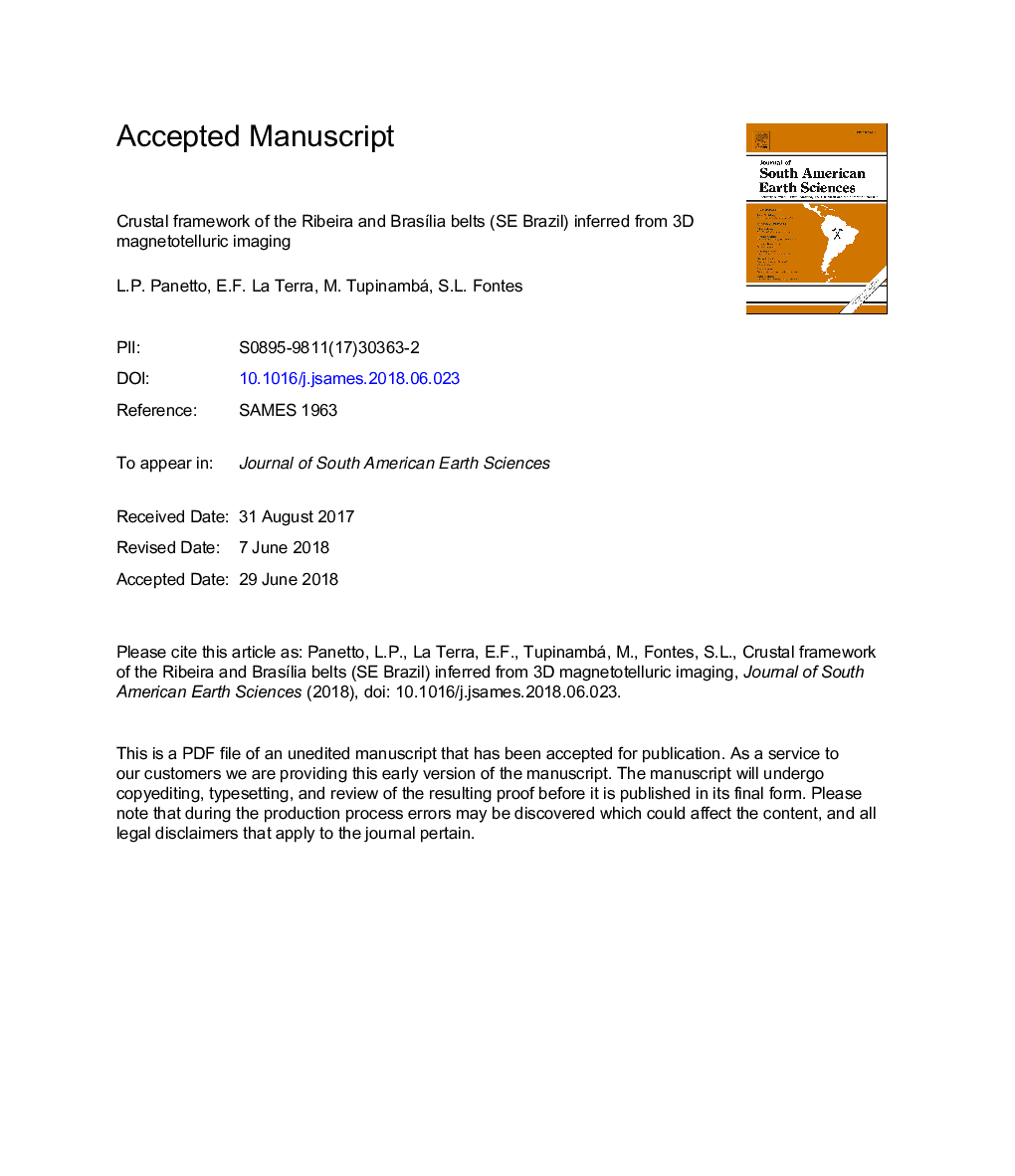| Article ID | Journal | Published Year | Pages | File Type |
|---|---|---|---|---|
| 8907594 | Journal of South American Earth Sciences | 2018 | 36 Pages |
Abstract
The interaction between the São Francisco Craton and its surrounding belts during the Gondwana formation produced an intricated structural framework with superposition of tectonic events. This work aims to infer the subsurface geoelectric structures along a cryptic suture between the BrasÃlia and Ribeira belts in order to verify tectonic limits between crustal blocks. A three-dimensional data inversion using the ModEM code was applied in 83 magnetotelluric sites of broad band and long period with remote reference. The processing was done by the robust method and with analysis of dimensionality and directionality through the phase tensor and induction vectors, respectively. Finally, an inversion model was generated, defined in a homogeneous mesh (103â¯Ãâ¯103 x 45) and 1000â¯Î©.â¯m of 2.3â¯Ãâ¯2.3â¯km (x, y) even including the ocean. The full impedance tensor data were inverted and after 224 iterations an adjustment of 1.98 was achieved. The modelled MT North and South profiles show distinct geoelectric frameworks at NW and SE segments. To the NW thin-skinned tectonics is evidenced by low angle dipping conductors below the tectonic domains of the BrasÃlia Belt and the interference zone with the Ribeira Belt. To the SE of the MT profiles the MT model shows two resistive blocks and a continuous conductor that follows a detachment fault below the Cenozoic Taubaté Basin. We interpret the limit between the different geoelectric profile segments as the suture between BrasÃlia and Ribeira Belts. The limit matches the first Ribeira Thrust in the North MT profile or the Buquira shear zone in the South MT profile. The Precambrian geometry of resistive blocks and conductors is modified in the Amparo Antiform by reverse and normal faults with vertical displacement reaching thousands of meters. Deep crustal and mantle geoelectric structures were also evidenced by our 3D MT modelling: a) high conductive domains with resistivity around 400â¯Î©.â¯m in the middle and lower crust; b) deep vertical conductors (DVC) with roots at the base of the lithosphere.
Related Topics
Physical Sciences and Engineering
Earth and Planetary Sciences
Earth and Planetary Sciences (General)
Authors
Liliane P. Panetto, Emanuele F. La Terra, Miguel Tupinambá, Sergio L. Fontes,
